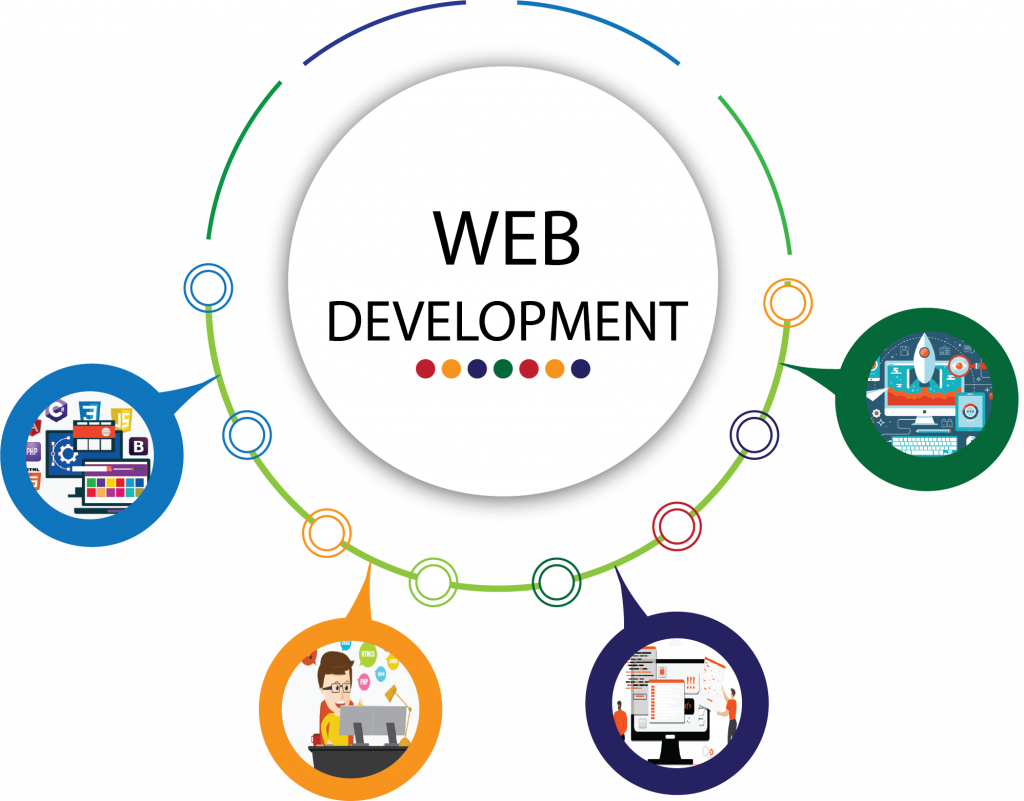Your Guide to Modern Internet Development: Patterns and Best Practices
In the quickly advancing landscape of internet growth, recognizing the latest trends and best practices is important for creating relevant and engaging digital experiences. Key factors to consider such as customer experience, receptive layout, and accessibility are not merely optional yet indispensable to the success of modern-day applications.
Arising Technologies in Internet Advancement
The development of web development is noted by an unrelenting quest of advancement, driven by the wish to enhance user experience and simplify procedures. Arising innovations remain to reshape the landscape, providing developers powerful devices to produce more dynamic and receptive applications. Secret among these technologies are Dynamic Internet Applications (PWAs), which mix the finest of web and mobile applications, providing offline capability and boosted efficiency.
Another substantial innovation is the increase of Expert system (AI) and Artificial Intelligence (ML), which allow customized user experiences and data-driven decision-making. These innovations help with chatbots, suggestion systems, and enhanced search functionalities, therefore transforming how individuals interact with internet applications.
Furthermore, the adoption of structures like React, Vue.js, and Angular has changed front-end growth, promoting modular layout and efficient state management. On the back end, serverless architecture and microservices promote scalability and adaptability, allowing developers to concentrate on writing code without handling infrastructure.
Value of Customer Experience
Individual experience (UX) has actually become an essential emphasis in web advancement, specifically as emerging innovations improve interactions. A positive UX not just enhances individual complete satisfaction however also drives interaction, retention, and conversions. ecommerce web development perth. In an increasingly competitive electronic landscape, organizations should focus on UX to separate themselves and satisfy customer expectations
Effective UX style is rooted in understanding user requirements and habits. This entails performing complete study, creating individual characters, and utilizing usability screening to collect understandings. By doing so, programmers can develop instinctive user interfaces that help with seamless navigating and lessen rubbing factors.
In addition, a properly designed UX can considerably affect a web site's performance metrics. Research studies have shown that users are most likely to abandon a website if they run into inadequate use or too much packing times. On the other hand, a structured, user-centric style can result in lower bounce rates and raised time invested on the site.
Accepting Responsive Layout
In today's diverse digital landscape, welcoming responsive design is crucial for making certain ideal individual experiences throughout different gadgets. With an increasing variety of users accessing internet sites via smartphones, tablets, and desktop computers, a receptive layout approach allows content to adapt effortlessly to different screen dimensions and orientations.
Receptive design utilizes liquid grids, versatile images, and CSS media inquiries to develop a dynamic design that adjusts in real-time. This approach not just enhances functionality yet also adds to boosted online search engine positions, as online search engine prefer internet sites that offer a regular experience across gadgets. In addition, responsive style lowers the need for multiple variations of a website, improving upkeep and updates.
Moreover, responsive design promotes better involvement by offering a tailored experience, keeping individuals on home the website longer and decreasing bounce rates. As customer actions proceeds to evolve, investing in receptive layout is crucial for companies intending to boost consumer complete satisfaction and drive conversions. In recap, taking on receptive design is not merely a trend; it is a fundamental method that lines up with the assumptions of modern-day customers, ensuring accessibility and performance despite the gadget they select to make use of.
Availability in Internet Growth
Creating a website that is both responsive and easily accessible is vital for reaching a larger audience. Accessibility in internet growth makes sure that all individuals, despite their abilities or disabilities, can properly involve with digital content. This consists of people with visual, auditory, cognitive, or electric motor problems.
To attain accessibility, programmers must abide by the Web Material Accessibility Standards (WCAG), which provide a framework for making internet content more perceivable, operable, easy to understand, and durable. Key techniques include using semantic HTML components, offering different message for images, making sure sufficient shade contrast, and making it possible for keyboard navigating.
Moreover, carrying out ARIA (Available Abundant Net Applications) qualities can boost ease of access, specifically for dynamic material and progressed interface. Examining with real individuals, consisting of those with disabilities, is crucial to recognize potential barriers and enhance customer experience.

The Surge of Progressive Internet Applications
A considerable shift in web development has emerged with the rise of Progressive Internet Applications (PWAs), which seamlessly incorporate the ideal attributes of mobile applications and typical internet sites (ecommerce web development perth). PWAs are made to give customers with a quick, trustworthy, and appealing experience, regardless of their internet link. This is attained with service workers, which enable offline abilities and background syncing, ensuring that customers can access web content even in low-connectivity situations
PWAs also utilize receptive design principles, ensuring that they operate smoothly across a selection of gadgets and screen sizes. This adaptability is visit this web-site essential in an era where customers significantly count on smart phones for their on-line activities. Furthermore, PWAs remove the requirement for separate application store installments, enabling for simpler and a lot more available circulation.

Final Thought
To conclude, contemporary web advancement necessitates a diverse strategy that encompasses emerging technologies, individual experience, receptive layout, ease of access, and the application of Modern Internet Applications. Sticking to these fads and ideal techniques not just boosts customer involvement yet additionally cultivates inclusivity, making certain that electronic web content comes to varied target markets. By focusing on these aspects, designers can produce impactful applications that satisfy the progressing requirements of individuals in a progressively digital landscape.